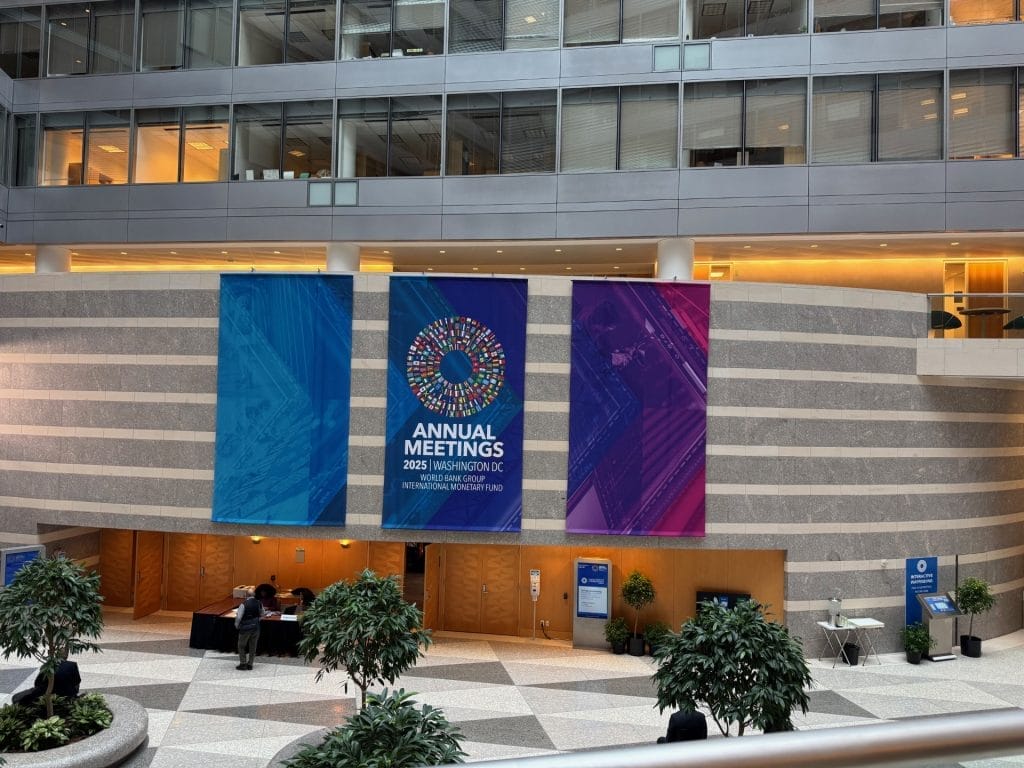
Last week, the annual IMF-World Bank meetings took place in Washington, DC. The buzzword of this edition was “resilience,” which to some extent was reflected by the title of the latest edition of the World Economic Outlook (WEO), “Global Economy in Flux, Prospects Remain Dim.” The WEO underlines how the global economy, which was rattled by the “Liberation Day” tariff announcements of April 2nd, which also caused a massively negative market reaction, has eventually proven to be more resilient than had initially been anticipated. Markets have recovered their initial losses and some of them recorded new highs (in particular in equity prices), despite some limited episodes of short-term volatility. Economic activity has certainly suffered as a result of the US tariffs, but not as much as was feared by most.
The updated forecasts released by the IMF underpin this initial assessment. “Global growth projections in the latest World Economic Outlook (WEO) are revised upward relative to the April 2025 WEO but continue to mark a downward revision relative to the pre-policy-shift forecasts. Global growth is projected to slow from 3.3 percent in 2024 to 3.2 percent in 2025 and 3.1 percent in 2026, with advanced economies growing around 1.5 percent and emerging market and developing economies just above 4 percent. Inflation is projected to continue to decline globally, though with variation across countries: above target in the United States—with risks tilted to the upside—and subdued elsewhere.”
In assessing that “prospects remain dim” the WEO says that “risks are tilted to the downside. Prolonged uncertainty, more protectionism, and labor supply shocks could reduce growth. Fiscal vulnerabilities, potential financial market corrections, and erosion of institutions could threaten stability.”
When looking at the forecasts in more detail, it is obvious that the key driver of economic activity growth remains the US, while other major areas of the global economy, such as China, the Eurozone and India, didn’t perform equally well. In the US, it is obvious that the key driver is private investment, primarily by tech firms. Drag in economic activity derives from the massive cuts to public spending (current and investment) and employment, with Non-Farm Payroll having shown very low numbers since May 2025, in spite of Trump’s firing of the BLS Commissioner Erika McEntarfer.
The US itself was subject to its own degree of policy uncertainty. For example, the 2017 tax cuts were renewed with the Big Beautiful Bill (BBB) act, but the increase in tariffs represent an increase in indirect taxes to average Americans, with people at the lower end of the income spectrum also suffering from cuts to public spending in healthcare.
The question we ask ourselves is: how really resilient is the global economy? True, it has survived the various rounds of tariffs imposed by the US, but the full effects of those tariffs may have not yet manifested themselves, especially on the inflation front.
Other critical aspects that were highlighted by the Global Financial Stability Report are the increased level of debt, which is reaching 100% of global GDP, a dynamic that cannot be reassuring. Even assuming that global r* – a sort of neutral rate able to balance global investment and global savings – remains constant, market rates are increasing at the long end of the yield curve, given the increase in the term premium embedded in those rates. Investors demand higher compensation for holding long-dated bonds, given the risks of economic underperformance, fiscal indiscipline and higher average inflation.
Of particular concern seems to be the attack on Federal Reserve independence perpetrated by the Trump administration. With rising inflation likely, the Fed has started to cut rates, and is expected to do so again in the coming months, potentially de-anchoring inflation expectations. Trump is widely expected to gain indirect control of the FOMC by June next year, when the mandate of Jay Powell will expire, and when the regional Fed presidents will need to be confirmed by the Board, over which he is indirectly taking control.
In conclusion, we could say the global economy has proven resilient, “so far.”